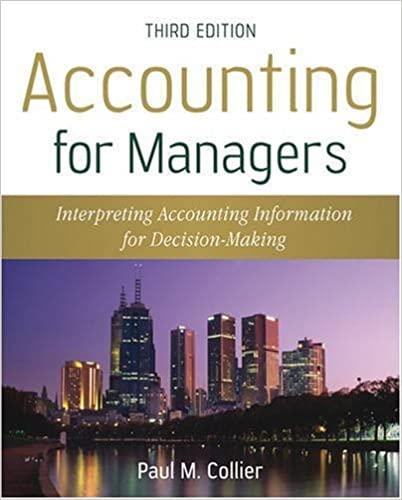Question
Part 1: Single-payments The formula that governs single amounts of money is F =P(1+i)n (1) where F is future value P is present value i
Part 1: Single-payments
The formula that governs single amounts of money is F =P(1+i)n (1)
where
F is future value P is present value i is the interest rate per period n is the number per periods
1-Suppose you have $100 today; how much will you have in 10 years, if your savings account pays 1% interest per annum? Note, 1% is the same as i = 0.01.
2-Suppose you want to save for a $100 purchase 10 years in the future. How much do you need to put in your bank account today, if it pays 1% interest per year?
3-Suppose you have $100 today; how much did you have to deposit in your savings account 10 years ago, if it pays 1% interest per annum? (Hint: This should be a short/easy/repet- itive question.)
Notice that the words present and future dont actually mean present and future, but that they indicate which values come first. In this question, todays value is F , and the value 10 years ago is P .
Part 1.1: Interest compounding period not a year
In most real-life cases, interest rates are cited annually, but compounded at periods less than a year. In this case, we need to revise our interest rate i to match the equivalent compounding period, and set our number of periods n to the equivalent number of compounding periods.
4-Suppose we are considering a 5-year investment that is compounded semi-annually (i.e. twice a year). What is the appropriate n?
5-Suppose our investment pays 2% per annum, compounded semi-annually. What is the appropriate i?
6-Compute the final value of our 5-year investment at 2% per annum compounded semi- annually, if we invest $100 today.
7-Suppose 7 years ago, we borrowed $1200 in at 1% per annum, compounded quarterly (i.e. 4 times a year). How much do we owe today?
8-How much would we owe if our loan had compounded monthly? This difference is the extra interest we have to pay.
Step by Step Solution
There are 3 Steps involved in it
Step: 1

Get Instant Access to Expert-Tailored Solutions
See step-by-step solutions with expert insights and AI powered tools for academic success
Step: 2

Step: 3

Ace Your Homework with AI
Get the answers you need in no time with our AI-driven, step-by-step assistance
Get Started


